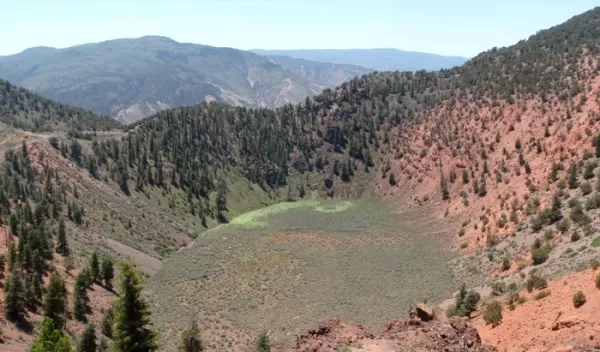
Survey of 1,800-plus 'young' volcanoes in the US Southwest
They're born. They live once, erupting for a period that might last for days, years or decades. Then, they go dark and die.
That narrative describes the life of a monogenetic volcano, a type of volcanic hazard that can pose important dangers despite an ephemeral existence.
The landscape of the southwestern U.S. is heavily scarred by past eruptions of such volcanoes, and a new study marks a step toward understanding future risks for the region.
The U.S. National Science Foundation-funded research, published in Geosphere, provides a broad overview of what scientists know -- and don't know -- about this type of volcanism in the U.S. Southwest over the past 2.58 million years, a geologic period known as the Quaternary.
During this time, more than 1,800 monogenetic volcanoes erupted in the region, according to a count covering Nevada, Utah, Arizona, Colorado, New Mexico and parts of California's eastern edge. Add in the Pinacate volcanic field, located mostly in the Mexican state of Sonora, bordering Arizona, and the number goes up to more than 2,200, scientists say. The volcanoes included are ones whose ages are estimated to be in the range of the Quaternary, but many have not been precisely dated.
"Monogenetic means 'one life,'" says lead author Greg Valentine, a University at Buffalo volcanologist. "So, a monogenetic volcano will erupt once, and that eruption may last for several days to several decades, but after that, the volcano is basically dead.
"In the United States, most volcanic hazards-related attention has rightly gone to places like Hawaii, and to the Pacific Northwest and Alaska, where we have big stratovolcanoes like Mount Rainier and Mount St. Helens, which will have many eruptive episodes over a long life, with widespread hazardous effects."
In the past, Valentine says, smaller monogenetic volcanoes have not been looked at from a focus on hazards; they have been studied mainly for what they tell us about the deep Earth. Recently, however, there has been more concern about the need to look at the kinds of hazards these volcanoes might pose.


